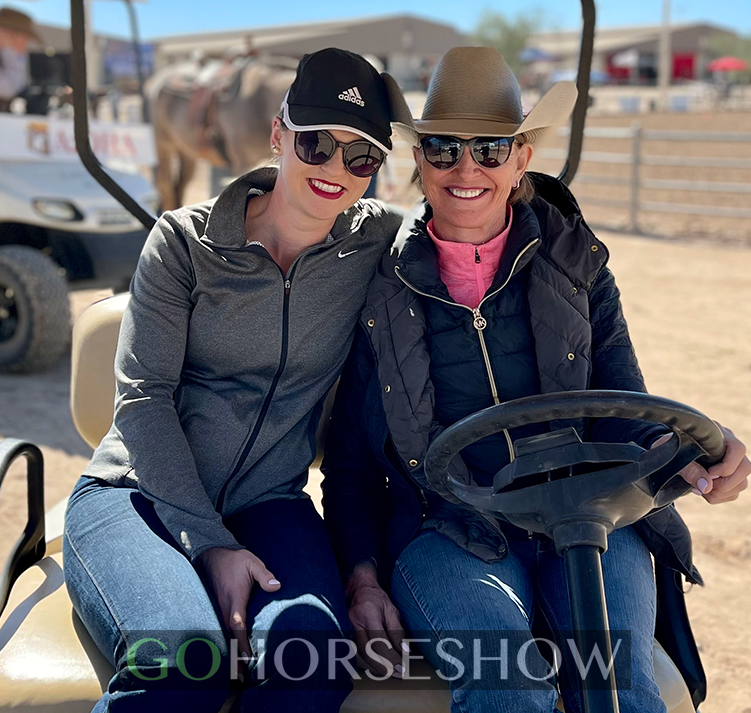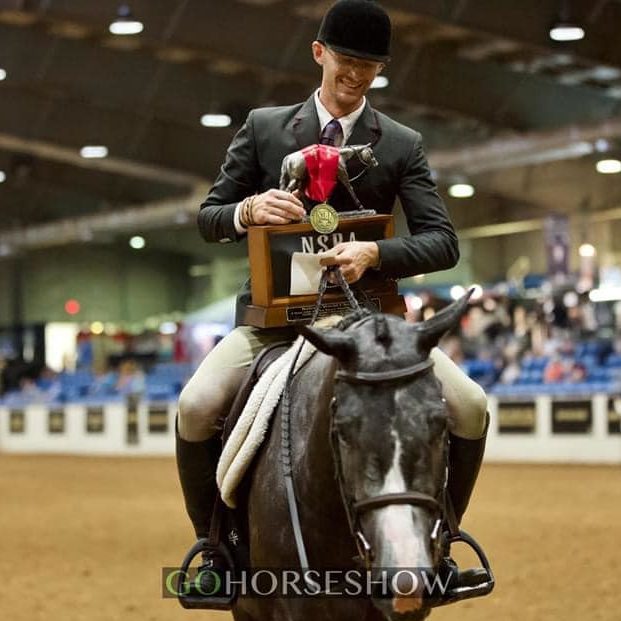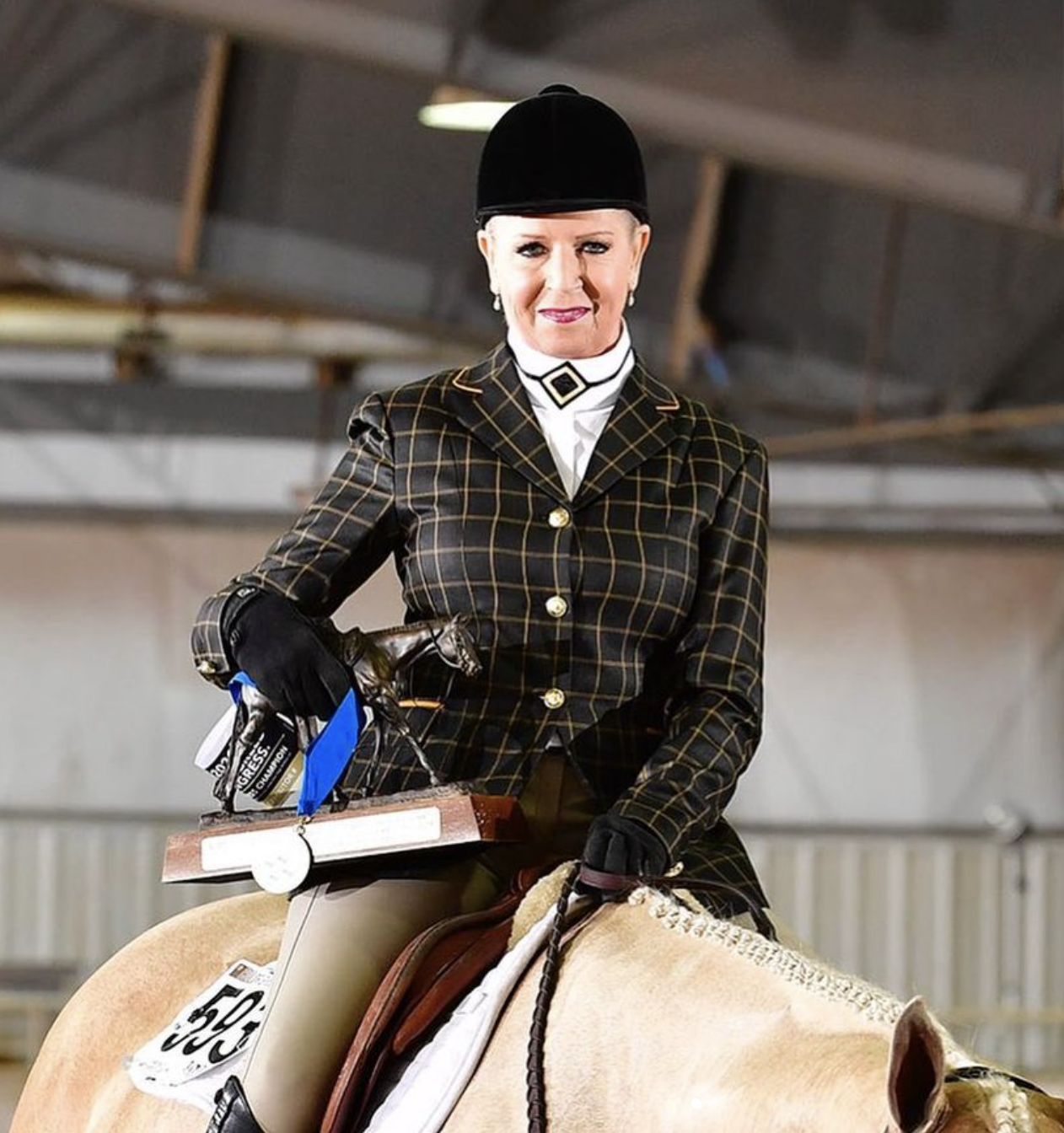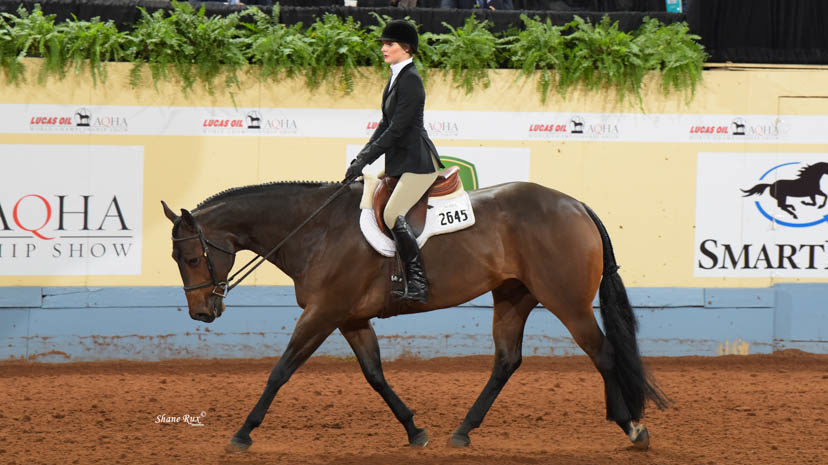Hunt Seat Equitation tests a competitor’s ability to ride a pattern consisting of maneuvers, such as changing gaits, traveling in a figure-8 pattern, backing, posting on the correct diagonal and counter-cantering.
Emphasis is placed on the ability to sit correctly, hold proper riding posture and control the horse with precision. Perfection in the show pen requires extensive practice.
GoHorseShow asked top professional trainers Carolyn Rice, Julian Harris and Tina Langness their advice for developing a better seat to nail an Equitation pattern during a show.
Carolyn Rice, Carolyn Rice Quarter Horses
 First, understanding the correct body position for the Hunt Seat Equitation is crucial. AQHA Professional Horsewoman, Carolyn Rice describes the proper position, “the rider’s hands should be over or in front of the horse’s withers, and elbows should be relaxed downward with eyes up and forward. Shoulders should be back and down, legs under the rider and against the horse’s sides. Heels must always be lower than the toes, with toes angled slightly away from the horse.”
First, understanding the correct body position for the Hunt Seat Equitation is crucial. AQHA Professional Horsewoman, Carolyn Rice describes the proper position, “the rider’s hands should be over or in front of the horse’s withers, and elbows should be relaxed downward with eyes up and forward. Shoulders should be back and down, legs under the rider and against the horse’s sides. Heels must always be lower than the toes, with toes angled slightly away from the horse.”
In a 2-point position, the rider has two points of contact; both legs, when the rider’s seat comes out of the saddle and moves into a forward position. Rice explained that in this position, the rider is approximately 30 degrees in front of the vertical.
“The only gait that the rider should be vertical is the walk. At the trot and canter, the rider will be slightly in front of the vertical. It is important to remember that the rider should never be behind the vertical in their body,” emphasized Rice.
Rice continued to explain, “A rider’s seat always has a high degree of influence on the horse. It is essential to maintain a strong seat position that is correct and connected.”
Additionally, having a correct and strong position will give the rider more confidence to maneuver the pattern and communicate better with the horse. Ultimately, this leads to a happier outcome for both the horse and rider.
Rice suggested several drills at home to develop a better seat and body awareness. Rice recommended, “ride without the use of the irons.” This can help a rider develop muscles and focus on connecting with the horse and absorbing the horse’s motion through the lower back. A rider uses the whole body in this exercise when they don’t have the irons to brace against that would otherwise make them bounce.
Additionally, Rice suggests trotting and cantering over poles to simulate a small jump. This exercise brings awareness to why a rider needs to be supple in their bodies and stay in time with the horse.
Julian Harris, Julian Harris Show Horses International
 AQHA Professional Horseman Julian Harris stressed, “In the Hunt Seat Equitation, the rider’s seat is incredibly crucial to show control of the rider’s body position and execute the pattern effectively and elegantly. The pattern is intended to look effortless and show synchronicity between the rider and horse. A stronger seat and relationship with the horse portrays softness and confidence while giving the pattern its respect for each maneuver.”
AQHA Professional Horseman Julian Harris stressed, “In the Hunt Seat Equitation, the rider’s seat is incredibly crucial to show control of the rider’s body position and execute the pattern effectively and elegantly. The pattern is intended to look effortless and show synchronicity between the rider and horse. A stronger seat and relationship with the horse portrays softness and confidence while giving the pattern its respect for each maneuver.”
The rider should have close contact with the horse, which puts the rider in a position to have complete control and support the horse throughout the pattern.
“A fluid seat, or riding with the horse’s motion, allows the rider to cue the horse efficiently and establish a partnership to complete the maneuvers throughout the pattern,” explained Harris.
The rider’s seat should be independent of the leg. Any additional motion from the body can be a distraction, especially when unnecessary. Furthermore, proper heel depth prevents loss of contact between the rider’s lower leg and horse.
To improve and maintain a rider’s seat, Harris suggests ensuring proper stirrup length. The stirrup length needs to be long enough that a straight line can be drawn from the point of the rider’s ear, to their cap of the shoulder, through ball of their hip and down to the heel.
To find this proper length, Harris described, “When standing next to the horse, place fingers on the pommel of the saddle. The stirrups should fit into the armpit of the rider while the stirrup leather is taut.”
Another strategy to apply when riding, a rider can drop their lower leg from the iron, and it should be next to the ball of the ankle when the leg is relaxed.
Harris proposed the best ways to develop a better seat include lots of no iron work and repetition during practice.
Moreover, Harris believes strongly in leading by example for his clients during practice. He adapts his program to individual rider’s ability, so they are as effective and successful as they can be.
In an Equitation pattern, “Make sure to add punctuation throughout your pattern. Each maneuver is written with a breath in between, so emphasize each maneuver one at a time and allow yourself time to gather and regroup before moving into the next maneuver,” advises Harris.
Tina Langness, Tina Langness Show Horses
 APHA Professional Horsewoman, Tina Langness described, “A good seat is quiet, the rider is sitting down and no day light should be seen between the saddle and rider.” The horse and rider must move as a single unit.
APHA Professional Horsewoman, Tina Langness described, “A good seat is quiet, the rider is sitting down and no day light should be seen between the saddle and rider.” The horse and rider must move as a single unit.
To sit properly, the rider’s core needs to be well developed. “The stronger the core, the more effective the rider becomes at stabilizing the upper and lower body,” Tina continues. “There is nothing more beautiful than a rider who uses the seat, leg and a light rein hand in unison. The horse should follow the rider’s hand and take cues from the leg. The horse will remain balanced when an effective seat is being used.”
Tina adds, “The rider’s seat should move with the horse in time and in rhythm and remain connected. The better the rider can do this, the easier it is for the horse to perform each maneuver.”
The rider’s foundation starts with a strong lower leg and heel. To establish a strong foundation, Langness described, “I like my riders to stand in the stirrups while the horse is stopped. I encourage them to let their weight sink into the heel, and let the calf stretch and warm up a bit.”
Langness continues, “Once the heel is down, the rider should sit, but maintain the position of the heel. I tell my riders to envision all of their weight being pushed down through the lower leg and heel, and to press the seat down while thinking they are trying to keep the footfalls of the horse on the ground longer. This helps a rider sit down while in motion.”
To create more balance and strengthen the rider’s core, Langness suggests while practicing the posting trot, sit two-beats and then stay in the air for two-beats.
Also, practicing the two-point position is an excellent exercise for the core making sure the rider’s hands are not resting on the neck of the horse. “We practice the two-point position at the walk, trot, canter and hand-gallop. Just like anything, the more you are in shape, the easier these exercises are,” detailed Langness.
During a show, maintaining all the work done in practice can be difficult. Langness provided several tips to maintain a balanced and effective seat before an Equitation class.
- Hydrate – Muscles recover much faster and good hydration is a key factor when ridding the body of excess lactic acid – a bi-product of strenuous muscle use. Riders will recover much faster after a hard day of showing.
- Stretch – A good warm up before the class helps limber the body, warm the horse and help with pre-class jitters.
- Know the pattern – Practice ahead of time until you are comfortable with each maneuver.
- Breathe – Thinking calm can help relieve stress.
- Enjoy yourself and enjoy the ride! – Over-stressing is hard on the body, mind and soul. Try to remain realistic and understand your skillsets. Pay close attention to the exhibitors that do well and try to learn how you can improve yourself through their performance.








